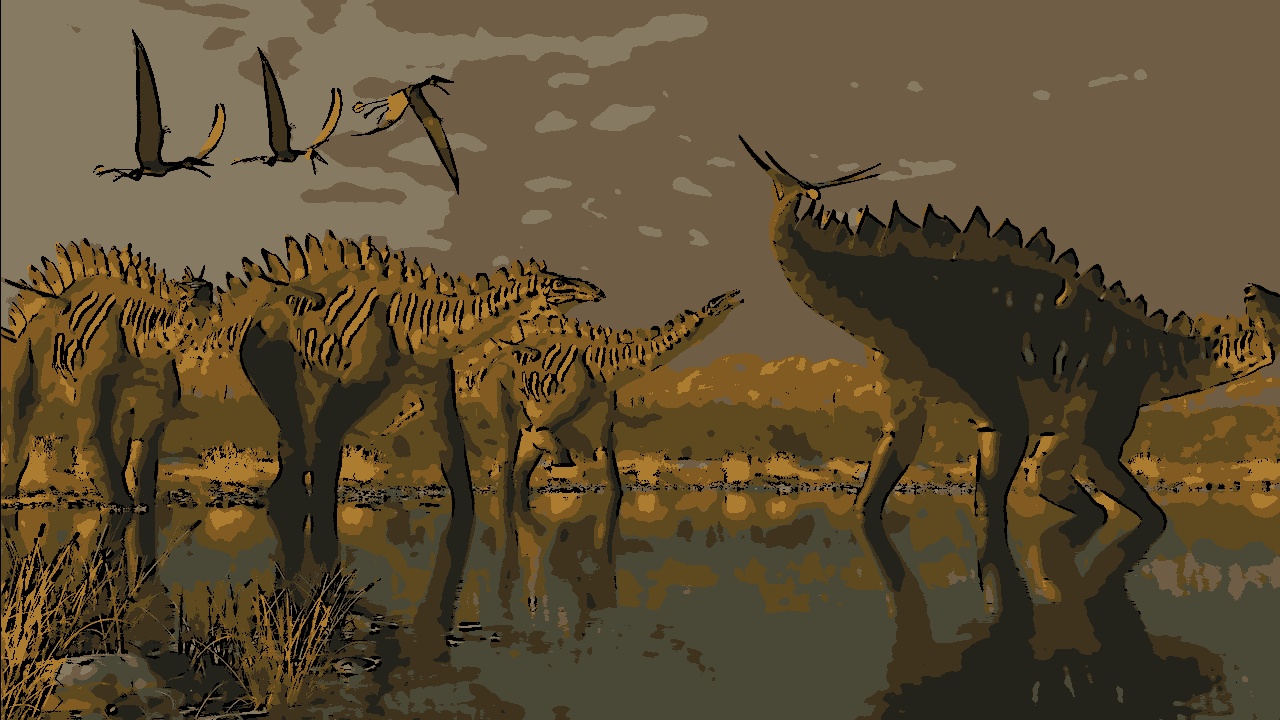A recent study proposes a new hypothesis on the evolution of dinosaurssuggesting that their origins may be associated with the region near the Ecuador line. This means that it is possible that the older dinosaur fossil will be hidden in places like the Amazonian or even in the current desert of Sahara. The theory challenges the predominant narrative, which locates the origin of these animals in the southern end of the southern hemisphere.
The mysterious origin of dinosaurs
Although there is still no consensus among scientists, the origin of dinosaurs remains involved in mystery. The oldest known records belong to the Argentina Eoraptor, Mbiresaaurus, Zimbabwe, and Saturnália, from Brazil, dating from approximately 230 million years ago. These fossils were found mostly below the Ecuador line, but the new study suggests that dinosaurs may have begun their evolution in regions closer to Ecuador.
Why is the Amazon a point of interest?
The differences observed in the three oldest fossils suggest that dinosaurs were already evolving long before these copies appeared. According to the study, published on January 23, important gaps in the fossil record still need to be filled. These gaps can be explained by the absence of paleontological research in areas such as the Amazon, which has great potential to reveal new secrets about the first dinosaurs.
Advanced modeling to solve the puzzle
Scientists used modeling techniques to simulate dinosaurs’ evolution and identify sub -padded regions. These models indicated that the Amazon, along with other equatorial areas, could have been the cradle of the first dinosaurs. The simulations also highlighted possible geographical barriers that could have influenced the dispersal of these animals.
The context of the supercontinent Pangeia
At the time the dinosaurs emerged, all continents were connected forming the supercontinent Pangeia. According to paleontologist Joel Heath of the University of London, dinosaurs emerged in the southern region of Pangeia, known as Gondwana. This location would coincide with areas today located along the Ecuador line, such as the Amazon.
Why is the Amazon still an unexplored ground?
Heath points out that the Amazon and other equatorial regions were neglected in paleontological studies. In addition, geologists rarely found rocks of the Triassic period in these regions, which makes it difficult to discover fossils. Another factor is the dense vegetation of the Amazon rainforest, which makes access to soil and extremely challenging geological formations.
The importance of exploring new areas
Despite the difficulties, Heath emphasizes that excavations in regions such as the Amazon can significantly change our understanding of the evolution of dinosaurs. Paleontological studies have historically focused on Europe, North America and, more recently, in China. Expanding research to neglected areas is essential to fill fossil record gaps.
Recent evidence reinforces theory
A recent discovery brought to light the fossil of an equatorial dinosaur, also dated 230 million years. Identified as a new species of sauropodomorph, the fossil reinforces the hypothesis that the evolution of dinosaurs occurred simultaneously in both hemispheric regions.
The Origin of Sauropodomorphs
Sauropodomorphs, a group to which some of the oldest dinosaurs belong, have records distributed around the world. The discovery of a new equatorial species suggests that these dinosaurs may have emerged in places closer to Ecuador than previously believed.
The Amazon as a potential paleontological treasure
Based on the study results, the Amazon can hide fossils from even older dinosaurs than already known. The isolation and environmental conditions of this region increase the chances of fossil preservation in deep geological layers.
Implications for Paleontology
Confirmation that dinosaurs have emerged in equatorial areas such as the Amazon can transform our understanding of the evolution of these animals. Future studies can reveal more clues about the first steps of dinosaurs on Earth.
What to expect from the future of research?
With the advancement of modeling techniques and the expansion of excavations in unexplored regions, such as the Amazon, scientists are optimistic about the future of paleontology. New discoveries can revolutionize what we know about the history of dinosaurs.
Summary for those in a hurry
- A study suggests that the dinosaurs may have emerged in equatorial regions, such as the Amazonian and the Sahara.
- The three oldest known fossils date from 230 million years and include species of Argentina, Brazil and Zimbabwe.
- The lack of excavations in Amazonian Creates important gaps in the fossil record.
- Computational models indicate that the first dinosaurs may have emerged in Gondwananext to Ecuador.

